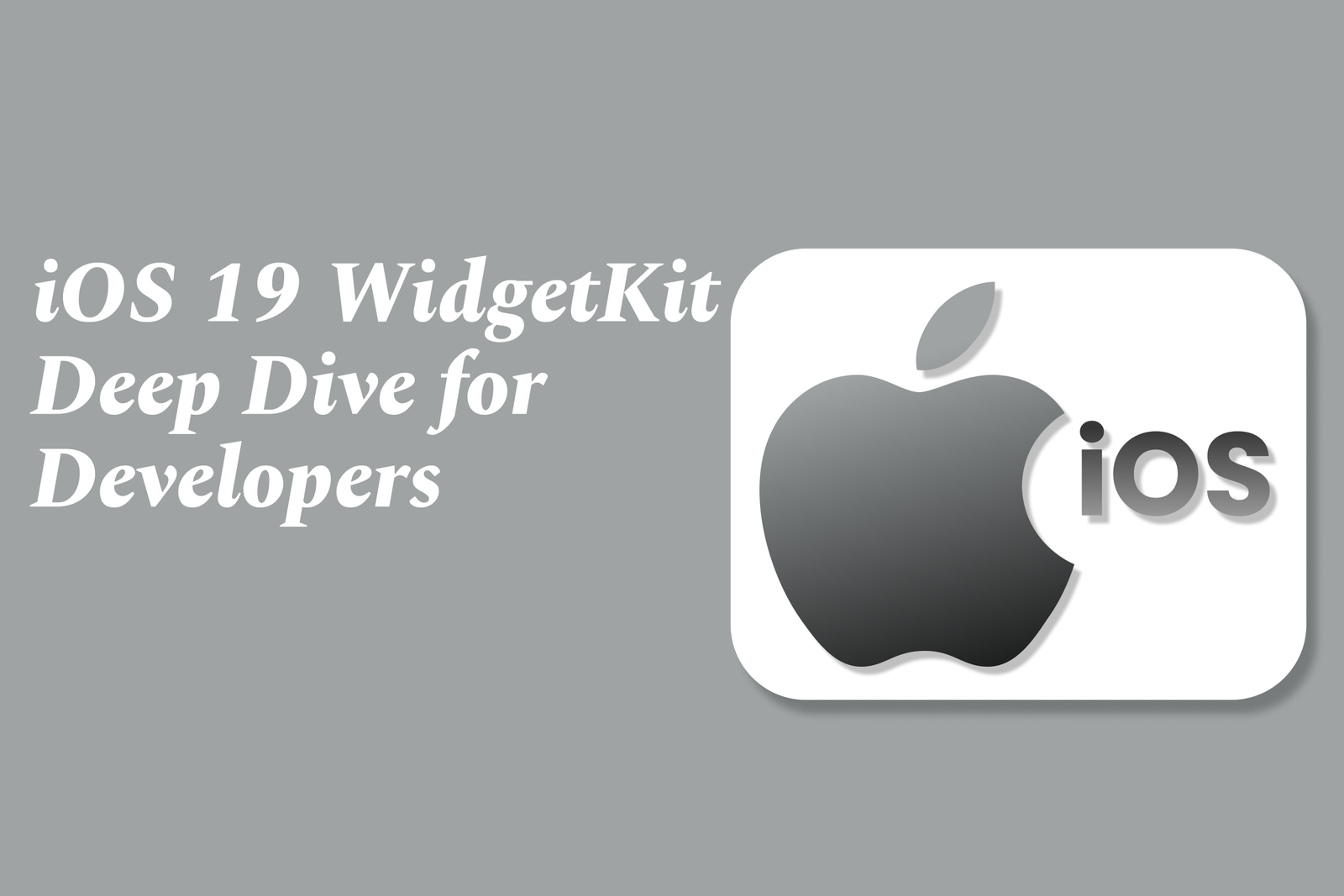iOS 19 widgetkit deep dive for developers
The iOS 19 WidgetKit Deep Dive for Developers is an advanced guide to building dynamic, interactive widgets using SwiftUI and WidgetKit. It covers creating static and live widgets, integrating with Dynamic Island, managing data, and enhancing user engagement on iPhone’s home and lock screens.
iOS 19 WidgetKit Deep Dive for Developers
1 ) Introduction to WidgetKit and SwiftUI 4 for iOS 16
WidgetKit enables developers to build dynamic, interactive widgets for iPhone’s home and lock screens.
The course covers fundamental WidgetKit architecture, including timeline providers, widget views, and configuration.
Focus on leveraging SwiftUI 4 and iOS 16 capabilities to enhance widget functionality.
2 ) WidgetKit Components and Architecture
Understanding the anatomy of widgets: timeline providers manage widget updates; widget views define user interface; configurations customize widget behavior.
Practical widget examples range from static photo widgets to complex live activity widgets.
Integration with system features like the Dynamic Island is explored to create interactive experiences.
3 ) Building Static and Dynamic Widgets
Detailed guidance on adding WidgetKit extensions in Xcode and establishing widget basics.
Techniques to create static widgets displaying fixed content and dynamic widgets fetching live or network driven data.
Emphasis on handling real time content such as weather updates and workout stats.
4 ) Advanced Widget Features: Live Activities and Interactivity
Implementation of live activity widgets that update continuously and respond to user context.
Utilizing App Intents framework for deeper system wide widget integration, enabling interactions via Siri, Spotlight, and controls.
Instructions on configuring widgets for lock screen and Dynamic Island to ensure seamless user engagement.
5 ) Data Management and Synchronization
Strategies for syncing widget data efficiently, including integration with Core Data for persistent storage.
Approaches to manage network calls and API integration ensuring up to date widget content.
Best practices to maintain responsiveness and reduce UI flash during updates.
6 ) Developer Skills and Tools Covered
The course strengthens skills in Swift programming, data modeling, UI design, and API usage within the iOS ecosystem.
Emphasis on building accessible, responsive, and visually compelling widgets that enhance app customization.
Recommended for intermediate iOS developers familiar with Swift and SwiftUI seeking advanced widget creation expertise.
7 ) Course Structure and Delivery
Comprised of 20 modules with approximately 10 hours of content per week over two weeks.
Incorporates video lessons, readings, hands on assignments, and interactive learning techniques.
Practical focus with progressive complexity, starting from widget basics to advanced live activities and Dynamic Island support.
Summary:
This comprehensive deep dive into iOS 19 WidgetKit empowers developers to master widget creation using SwiftUI 4 and iOS 16 features. It covers foundational concepts to advanced practices like live activities and Dynamic Island integration, offering practical skills to deliver engaging and interactive widget experiences on iPhone’s home and lock screens.
https://justacademy.in/news-detail/react-native-app-size-reduction-strategies
https://justacademy.in/news-detail/swift-package-manager:-new-features-for-modular-apps
https://justacademy.in/news-detail/android-offline-mode-improvements
https://justacademy.in/news-detail/flutter-forward-2025-recap
https://justacademy.in/news-detail/ios-development-tools-you-should-be-using
Related Posts
In 2025, top Angular libraries offer modern, feature-rich components and tools for building dynamic web apps. From powerful data grids to low-code platforms like UI Bakery, these libraries enhance development speed, UI design, and scalability, making them essential for Angular developers.
Migrating from AngularJS to Angular 17 involves gradually upgrading your app by running both frameworks together using tools like ngUpgrade, rewriting components in TypeScript, and adopting Angular’s modern architecture to enhance performance, maintainability, and long-term support.
Angular state management tools help organize and handle app data efficiently, improving scalability and maintainability. Popular options include NgRx for robust, RxJS-based patterns, and newer Signal Store solutions that offer simpler, reactive approaches integrated tightly with Angular’s latest features.
RxJS in Angular empowers developers to manage asynchronous data streams with powerful operators like `forkJoin`, `combineLatest`, and `zip`. Mastering these key operators in 2025 is essential for building efficient, reactive applications that handle complex event sequences seamlessly.
Angular performance optimization in 2025 focuses on improving app speed and responsiveness by using techniques like OnPush change detection, lazy loading, efficient data caching, and AOT compilation. These practices reduce load times, enhance user experience, and ensure scalable, fast Angular applications.
In 2025, Angular remains preferred for large-scale, enterprise apps with its robust, all-in-one framework, while Vue attracts developers seeking simplicity and fast development for smaller projects. Both frameworks excel, with choice driven by project needs and team expertise.
Angular Signals are a new reactive primitive in Angular 16 that enable fine-grained, efficient change detection by automatically tracking dependencies and updating only affected parts of the UI. They simplify state management and boost app performance, revolutionizing Angular's reactivity model.
Angular interview questions to prepare in 2025 focus on core concepts like components, directives, data binding, routing, and dependency injection, along with TypeScript mastery and latest Angular features to ensure strong practical knowledge for building scalable, efficient web applications.
AngularJS reached its official end of support in January 2022, meaning no further updates or security patches. To ensure app security and performance, developers should consider migrating to modern Angular versions or seek third-party long-term support options if immediate migration isn’t possible.
The Angular Roadmap 2025 highlights upcoming features focused on improving developer experience and performance, including zoneless Angular, Signals integration, enhanced Forms, async data handling, improved HMR, and expanded Angular Material/CDK enhancements, driving modern, efficient web app development.










